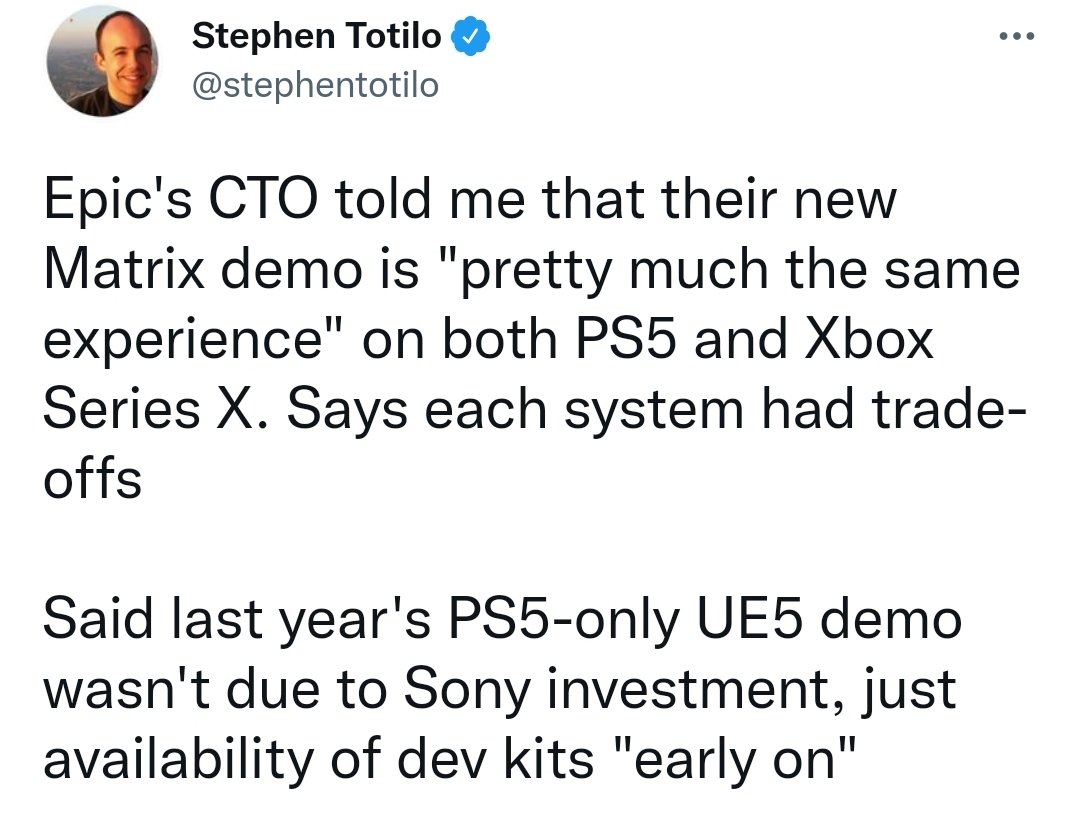RaySoft
Member
Why are you guys treating this as the pinnacle of acheivement for next-gen? (yeah, we still live in that world) This is just a generic game engine, covering all bases... (yes, really good one at that) What you need to think about is what would targeted code do to each hardware? (i.e 1st party)Yup.
People keep forgetting that The Coalitions branch of Unreal Engine has influenced the main branch of Unreal Engine.
Theres no way they would do optimization work and then Epic looks at that work and just throws it away for the PS5 version.
Beyond Epic themselves TC are king tier Unreal Engine devs especially when you consider Epic trust their work enough to integrate features into the main branch.
I wonder if Netherealm have moved to Unreal Engine 5 yet...I imagine they too have some insane tools and features for the engine.
As for slowest drive that could work with this demo.
Probably anything that can maintain ~400MB/s.
PC is unlikely to get the first section but the open world and fly mode should give us a good indication of how much data the demo actually needs.
The PS5s SSD for Unreal Engine 5 is overkill.....but not every developer is going to use Unreal Engine 5 so it may still yet show off its benefits.
MS is somewhat off that wagon since they are multiplat (Series' & PC), but they can still punch way above their weight, console style. If people really thinks that the SSD speed advantage of the PS5 will only result in less waiting time, they will be proven wrong...
Last edited:

